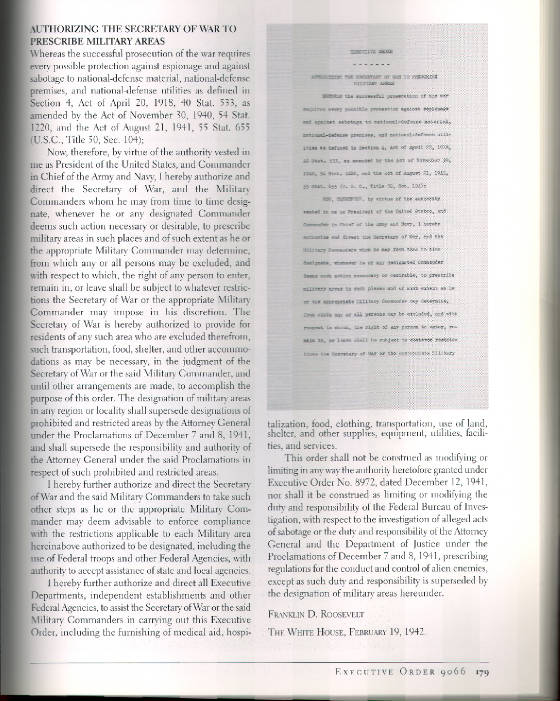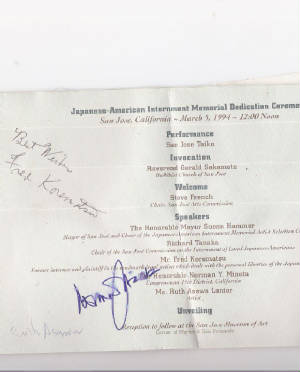|
|
"...the Ringle Report, from the Office of Naval Intelligence, found that only a small percentage of Japanese Americans posed a potential security threat, and that the most dangerous were already known or in custody. But the Solicitor General did not inform the (Supreme) Court of the report, despite warnings from Department of Justice attorneys that failing to alert the Court "might approximate the suppression of evidence." Instead, (the Solicitor) argued that it was impossible to segregate loyal Japanese Americans from disloyal ones."
Meeting Fred Korematsu on March 5th, 1994 at the dedication of the Japanese-American
Internment Memorial in San Jose was a deeply moving and memorable experience. I was there as a guest of the artist Ruth Asawa
Lanier, whose design and fabrication of this unbelievably brilliant and personally descriptive work remains one of her most
important pieces. At the dedication it was noted that it took the urging of the San Jose Commission on the Internment of Japanese-Americans
to fight and petition the California Department of Education for school textbooks to contain information and stories relating
to the internment and personal internment experiences. This was 1994, some 50 years after Executive Order 9066 was put into
effect. When I shook Fred Korematsu's hand, I instincively apologized, asking him to accept
my apology to him for our government using political justification to break a sacred constitutional protection. I remember
him smiling at me, giving me a firm handshake and saying that we have come a long way. He remarked that what was done to him
was on account of race, absent political justification, and should not happen again.
Click Here to download a photomontage made by Dorothea Lange of the Tanforan Assembly Center.
|
|||||||||||||||||||||||||


